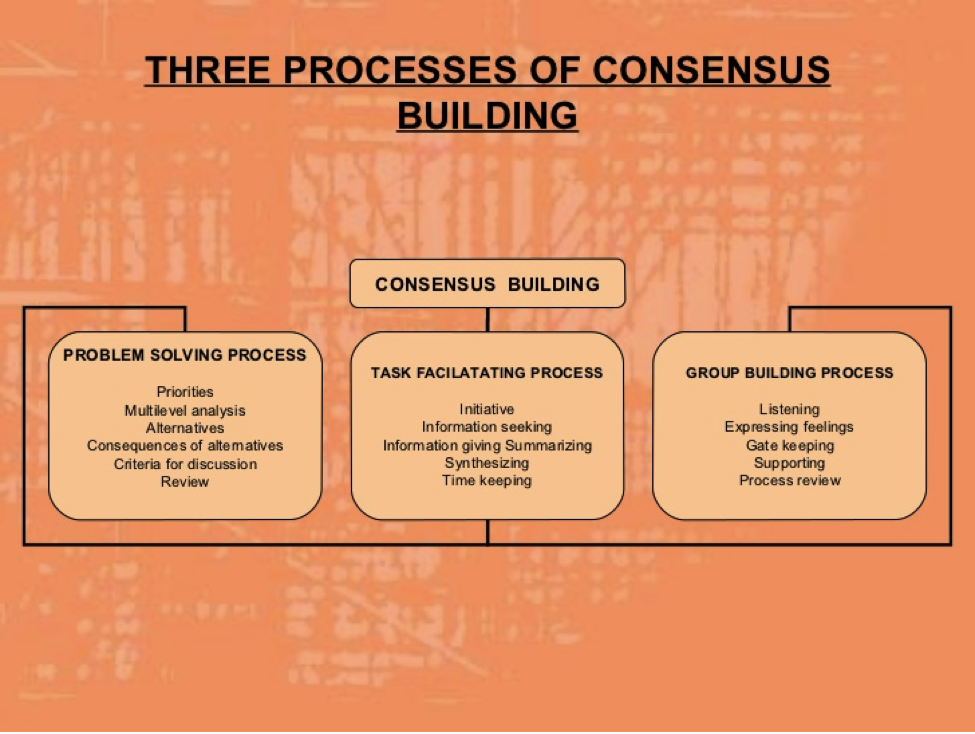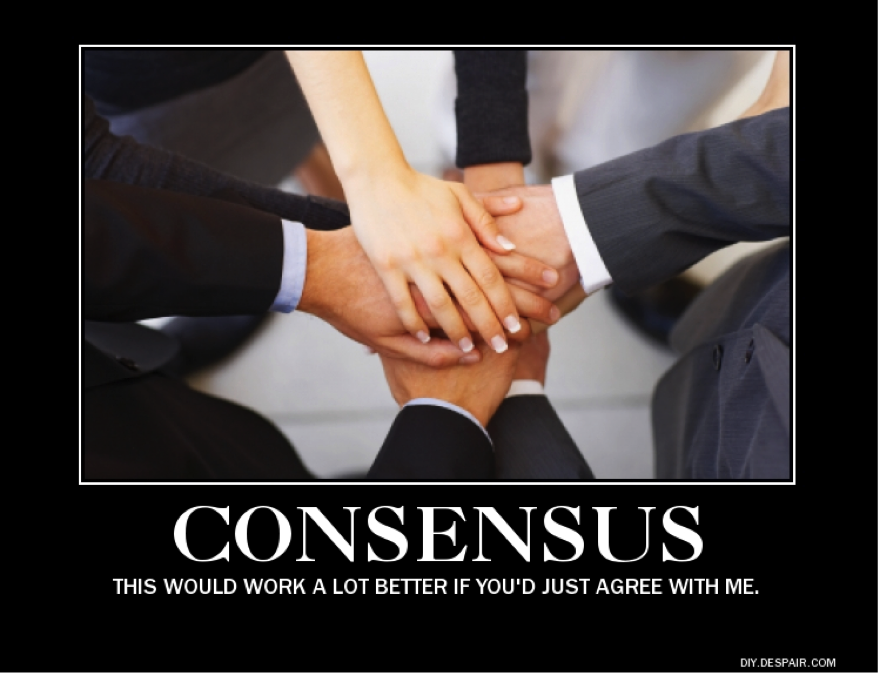In a nutshell, achieving consensus for anything essentially means getting a group of people to agree on a specific topic or idea. In business, this usually comes into play when you have a group of “highly opinionated managers who need to be [in alignment]” on a subject in order to move forward. Anyone who has tried to be the driving force behind this knows that it’s no small feat. Any time you ask a diverse group of people to agree on something there is guaranteed to be some obstacles that occur. Fortunately, this is a skill that can be developed given some time, effort, and patience.
The Art of Building Consensus
Read below to find out how to improve your chances of driving consensus as well as how to apply this skill towards building an effective marketing plan.
Know Your Teammates
It’s important to make sure that everyone on your team is on the same page; and don’t be surprised if, in the beginning, this turns out not to be true. Any time you get a group of diverse stakeholders together you’re bound to experience some friction, especially in the beginning of the resolution process. Have a discussion about goals to see what everyone on the team is hoping to accomplish, and then modify those goals if necessary (see number 2). If everyone doesn’t want the same thing most likely you’re going to have a very hard time getting anything done. In addition, as the team leader, get to know more about your team. Determine whether your pitch should be personal or logical (or a little bit of both). Which approach will be most effective with the people with whom you are dealing?
Identify the Problem, Set Goals, and Stick to Them
Before you can decide on some common goals, it’s necessary to identify the problem or issue that you’re looking to resolve. Again, it’s important to let everyone in the group speak on this matter so that you can get your ideas aligned; you don’t want to find out that you’re working towards different goals after you’ve spent a ton of hours on this process. In addition, getting everyone on the same page reduces the potential for negativity and unproductive conversations. Once you’ve decided on a common goal (see example online marketing goals here) making sure the meeting(s) don’t stray far from them. If you sense that others are getting off topic remind them of your unified goals.
Incorporate All the Stakeholders into the Process
While it is essential to have a group leader or facilitator, don’t forget that all the stakeholders are present for a reason, and they should have plenty of opportunity to express their ideas and/or concerns. This gives you authority without coming off as arrogant or unapproachable. Definitely don’t pull rank or act condescending; you’ll lose your audience before you’ve even begun, and then nothing will get accomplished.
Give the Super-Opinionated People a Voice in the Beginning
While it may be tempting to immediately shut down those people who try to monopolize a conversation, this isn’t the best approach. Whether you like it or not, opinionated stakeholders are still just that- stakeholders. Meaning, they have a stake in the process and deserve to have their opinions heard whether they are popular or polite. Instead of ignoring them, listen to them first. Let them burn off steam and let everyone get to know their perspective. Chances are, if they feel like they’re being heard and valued they will be more productive later on down the line. This approach will ease tension from other people as well. If this doesn’t work, meet with others in the group privately to get some allies and then isolate the problem person. Peer pressure isn’t the best method, but it’s an effective one.
Define Success and Close the Deal
According to Beyond Intractability, success doesn’t have to be unanimity. There are times when you just won’t get everyone to agree. Instead, think back to the goals you set in the beginning. Did you meet them? Did the outcome serve the best interests of the majority of the stakeholders? If you can answer yes to one or both of those questions, you’ve achieved success. Obviously it would be great to close the deal, and that is what you should be working towards, but if it just wasn’t possible then don’t consider yourself a failure. Hopefully you’ve learned some valuable consensus-building skills along the way and you can take this knowledge and apply it the next time you need to facilitate the solution to a problem.
How to Use These Skills to Drive Your Marketing Plan
So now that you’re an expert on how to get a group of people to agree on an issue, solution, or problem, how can you apply this to marketing? It’s simple really. Take everything you learned above and apply it when you’re coming up with your marketing pitch. Set your goal(s). Most likely, one of your goals will be for the group of stakeholders to embrace your marketing plan and thus allow you to close the deal. Just make sure you go into it knowing that this might not happen right off the bat. Chances are you’ll be pitching to a group of people with different backgrounds, opinions, and agendas. This should influence, if not change, the way you pitch your plan. Get to know your audience ahead of time. Think about what type of approach will best resonate with them. If you can, speak to them privately and learn what their individual goals are, and then incorporate solutions to them into your pitch. Make sure they feel like they have a say in your plan.
Shameless plug: As a Marketing Agency, we can help prepare you for the pitch if you need any extra guidance!
It’s ok to pitch a plan to an audience, listen to their suggestions, and then revise it and re-pitch it at another meeting. Your stakeholders will most likely appreciate your willingness to consider their opinions. If the meeting starts to get off-topic remind them of your common goals, and don’t give up if one or two people act negative or disinterested. Only after you’ve done all this preliminary work should you focus on closing the deal. Hopefully the team appreciates your hard work at facilitating a difficult meeting and rewards you by embracing your marketing plan, but if not that’s ok. Define what success means for you, learn from your mistakes, and try again.
For more helpful information on how to build and drive consensus, check out this article from the Salesforce Blog. Then, let us know what you think in the comment section below.
Image Credit: googleusercontent.com
Image Credit: slidesharecdn.com



